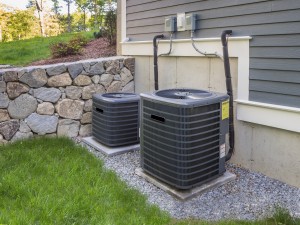Heating and cooling your home is the most important factor in keeping it comfortable. You want a system that is going to work the most efficiently based on your home’s layout and the climate where you live. It is also important to understand the potential constraints of your home based on what is already in place and spatial issues.

The experts at Ideal Plumbing, Heating, Air & Electrical can help you determine what type of heating will work for your San Diego home – and these are some of the options they may suggest:
Standard Forced Air Furnaces.
These are the most common heater systems in the U.S. Using ductwork throughout the home, standard forced air furnaces distribute heat to all of the connected rooms. A forced air furnace can also be outfitted to work with central air conditioning so homeowners can have a full heating/cooling system that works with the same infrastructure.
The three options for forced air furnaces include up-flow, down-flow and horizontal flow. Each one refers to the way air is delivered in rooms in order to achieve the desired temperature. If you are living in a home with forced air already in place, then the variations of delivery are already determined. If you are building a new home, seek a consultation from the experts at Ideal Plumbing, Heating, Air & Electrical to determine which forced-air delivery is smartest based on your home’s layout.
Split-system Heat Pumps.
This is a popular choice in warmer climate areas like San Diego because split-system heat pumps work entirely on electricity and can be used as central air conditioners too. Compared with other furnace options, a split-system heat pump is inexpensive. The use of electricity instead of gas or propane also brings down the cost of using this type of heater.
Mini-Split Heating Systems.
The great thing about this type of system is that it lacks any ductwork. There is a condenser outside and a wall-mounted air handler inside. Mini-split systems are great for older homes that were built without heating units. These are ideal for small homes or apartments, or sections of homes that are new and may not have ductwork. Mini-splits can be a great solution for allergy sufferers, because they come equipped with anti-allergen filters, and can prevent cross flow of air and allergens throughout the house.
Wall Furnaces
Built for smaller home and spaces, wall furnaces operate on either gas or electricity to heat a space. These types of units do not use ductwork, as they connect directly through the wall to outdoors, drawing in air through the mount. Some wall furnaces do not blow warm air into the room, instead using convection to allow warm air to gently heat an area.
Package Heating Units.
This option generally has cooling and heating components and the units are located outside. The units connect to ductwork already in the home but save space by having the units outside. Packaged heat pumps run on electricity while gas packs use electricity for air conditioning, and propane or natural gas for heating.
The type of heating you choose should be determined by the size and layout of your home and also the climate where you live. Get an expert consultation to be sure you pick the right kind to keep your home comfortable and efficient.

 FREE Live Music and Family Fun at Allied Gardens First Fridays The next Allied Gardens First Fridays Summer Concert in the Park is just around the corner. Grab your lawn chairs, bring a picnic, and get ready to meet your
FREE Live Music and Family Fun at Allied Gardens First Fridays The next Allied Gardens First Fridays Summer Concert in the Park is just around the corner. Grab your lawn chairs, bring a picnic, and get ready to meet your  Ideal Plumbing Heating Air Electrical Named Winner of 2023 Better Business Bureau Torch Awards for Ethics in San Diego (San Diego, CA – September 15, 2023) Better Business Bureau Serving the Pacific Southwest (BBB) has named Ideal Plumbing Heating
Ideal Plumbing Heating Air Electrical Named Winner of 2023 Better Business Bureau Torch Awards for Ethics in San Diego (San Diego, CA – September 15, 2023) Better Business Bureau Serving the Pacific Southwest (BBB) has named Ideal Plumbing Heating